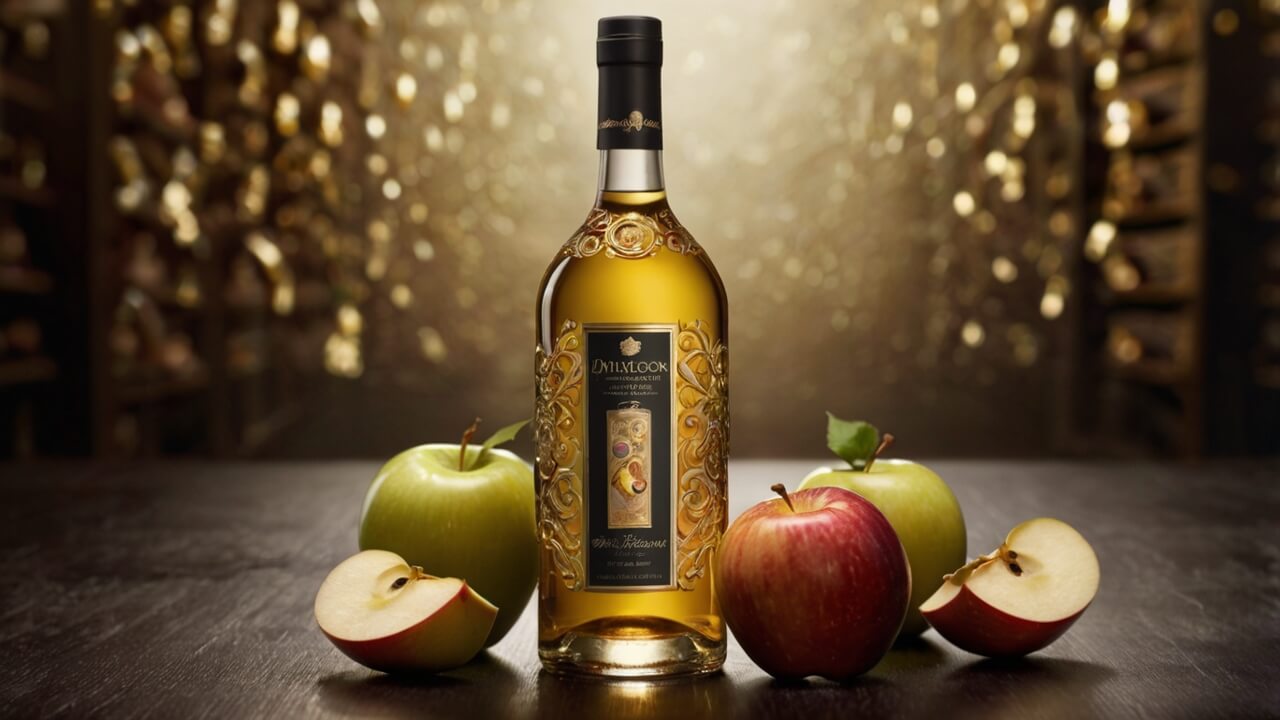As the leaves begin to change color and the crisp autumn air ushers in cozy sweaters and crackling fires, there’s no better way to embrace the season than with a glass of Apple Pie Wine.
This delightful homemade beverage captures the essence of fall, blending the comforting flavors of apple pie with the art of winemaking.
The appeal of Apple Pie Wine lies in its unique and inviting aroma, which tantalizes the senses with notes of warm spices like cinnamon and nutmeg, intertwined with the sweetness of ripe apples.
Each sip is a journey through a beloved autumnal treat, transporting you to memories of family gatherings and festive celebrations.
The inspiration behind this recipe stems from a desire to recreate the nostalgic flavors of homemade apple pie in liquid form.
By combining the natural sweetness of apple juice with the fermentation process, a remarkable transformation occurs, resulting in a wine that is both familiar and delightfully surprising.
Ingredients and Equipment

Ingredients:
- Apple Juice: The base of your wine. Use a high-quality, preservative-free apple juice for the best flavor. You’ll need around 1 gallon (3.8 liters) of juice.
- Wine Yeast: A wine yeast strain like Montrachet or Red Star Premier Cuvée is recommended for this recipe. These yeasts are designed to produce a dry, crisp wine.
- Sugar: Adding sugar to the must (unfermented juice) will increase the alcohol content. Use around 1-2 lbs (0.5-1 kg) of regular white sugar.
- Yeast Nutrient: This will provide the yeast with essential nutrients for a healthy fermentation. Follow the package instructions for the appropriate amount.
- Pectic Enzyme: An optional addition that can help clarify the wine by breaking down pectin in the apple juice.
- Spices: To recreate the apple pie flavor, you’ll need cinnamon sticks, whole cloves, and optionally, a vanilla bean.
Equipment:
- Fermenter: A 1-gallon (3.8-liter) glass carboy or food-grade plastic bucket with an airlock.
- Siphon Tubing: For transferring the wine during racking and bottling.
- Bottles: Clean, sanitized bottles with caps or corks for bottling the finished wine.
- Hydrometer: Used to measure the sugar content and potential alcohol level.
- Sanitizer: A no-rinse sanitizer like Star San or potassium metabisulfite to keep everything clean.
- Funnel: For easy transfer of the wine into bottles.
- Wine Corker/Capper: Depending on your bottle choice, a corker or capper to seal the bottles.
- Spoon/Strainer: For adding spices and removing them after infusion.
Make sure to sanitize all equipment before use to prevent contamination and ensure a successful fermentation.
Preparing the Must

Before diving into the fermentation process, it’s crucial to properly prepare the “must” – the unfermented juice containing all the ingredients for fermentation. This step sets the stage for a successful batch of Apple Pie Wine.
Setting up the Fermenter
Begin by thoroughly sanitizing your fermenter, airlock, and any equipment that will come into contact with the must. Proper sanitization prevents contamination and ensures a clean fermentation environment. Once sanitized, assemble the fermenter and attach the airlock, leaving it open to allow air to escape during fermentation.
Preparing the Apple Juice
The star ingredient in this recipe is high-quality apple juice or cider. Look for preservative-free options with no added sugars or flavors. You’ll need approximately 1 gallon (3.8 liters) of apple juice for a standard 1-gallon (3.8 liters) batch. If using fresh apples, press them to extract the juice, or consider using a combination of fresh and store-bought juice for added depth of flavor.
Adding the Spices
To capture the essence of apple pie, you’ll need to add a blend of warm, comforting spices. In a small muslin bag or tea infuser, combine:
- 2 cinnamon sticks
- 1 tablespoon (15 ml) of whole cloves
- 1 teaspoon (5 ml) of whole allspice berries
- 1 whole nutmeg, grated
This spice blend will be added to the must during the secondary fermentation stage, allowing the flavors to infuse into the wine gradually.
Preparing the Other Ingredients
In addition to the apple juice and spices, you’ll need:
- 1 pound (454 grams) of granulated sugar (or enough to reach the desired starting gravity)
- 1 package of wine yeast (specific strains like Montrachet or Red Star Premier Cuvée are recommended)
- 1 teaspoon (5 ml) of yeast nutrient (optional but recommended for a healthy fermentation)
Dissolve the sugar in the apple juice, and gently stir in the yeast nutrient (if using). Once the sugar has fully dissolved, you’re ready to move on to the primary fermentation stage.
By meticulously preparing the must, you’ve laid the foundation for a flavorful and aromatic Apple Pie Wine. Remember to sanitize all equipment and handle the ingredients with care to ensure a successful fermentation process.
Primary Fermentation
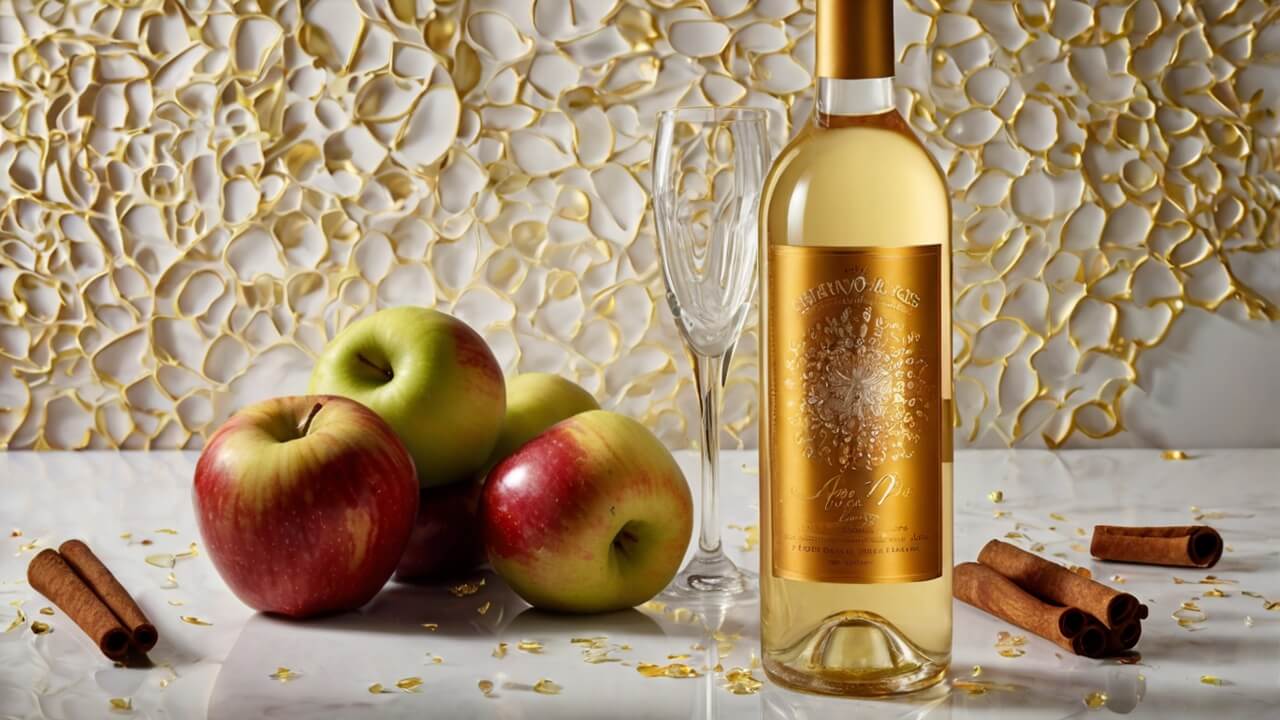
Once you have combined the apple juice, water, and other ingredients in the sanitized fermenter, it’s time to kick off the primary fermentation process.
This crucial stage involves introducing the wine yeast to the must (unfermented juice) and allowing it to convert the natural sugars into alcohol.
To start, make a yeast starter by rehydrating the wine yeast according to the package instructions, typically by mixing it with a small amount of warm water.
Once the yeast is activated and foamy, pitch it into the must and give it a gentle stir to incorporate oxygen and evenly distribute the yeast cells.
Within 12-24 hours, you should notice active fermentation, evidenced by the formation of a thick layer of foam or “krausen” on the surface, and the release of carbon dioxide gas.
Maintain the fermentation temperature within the recommended range, typically between 64°F and 75°F (18°C and 24°C), as temperature fluctuations can stress the yeast and affect the final product.
Monitoring and Maintaining Fermentation

During the primary fermentation stage, which can last from 5 to 14 days, it’s essential to monitor the progress closely. Use a wine thief or sterilized turkey baster to extract samples and track the specific gravity readings with a hydrometer.
As the yeast consumes the sugars, the specific gravity will gradually decrease, indicating the fermentation is progressing as expected.
Maintain a sanitized airlock or fermentation lid to allow carbon dioxide to escape while preventing oxygen exposure and potential contamination.
If the fermentation appears sluggish or stuck, you may need to rouse the yeast by gently stirring or adding a yeast nutrient to provide essential vitamins and minerals.
Once the specific gravity readings stabilize for two to three consecutive days, indicating the yeast has consumed most of the fermentable sugars, the primary fermentation is complete.
At this point, you can proceed to the secondary fermentation stage, where additional flavors and aromas will develop.
Secondary Fermentation
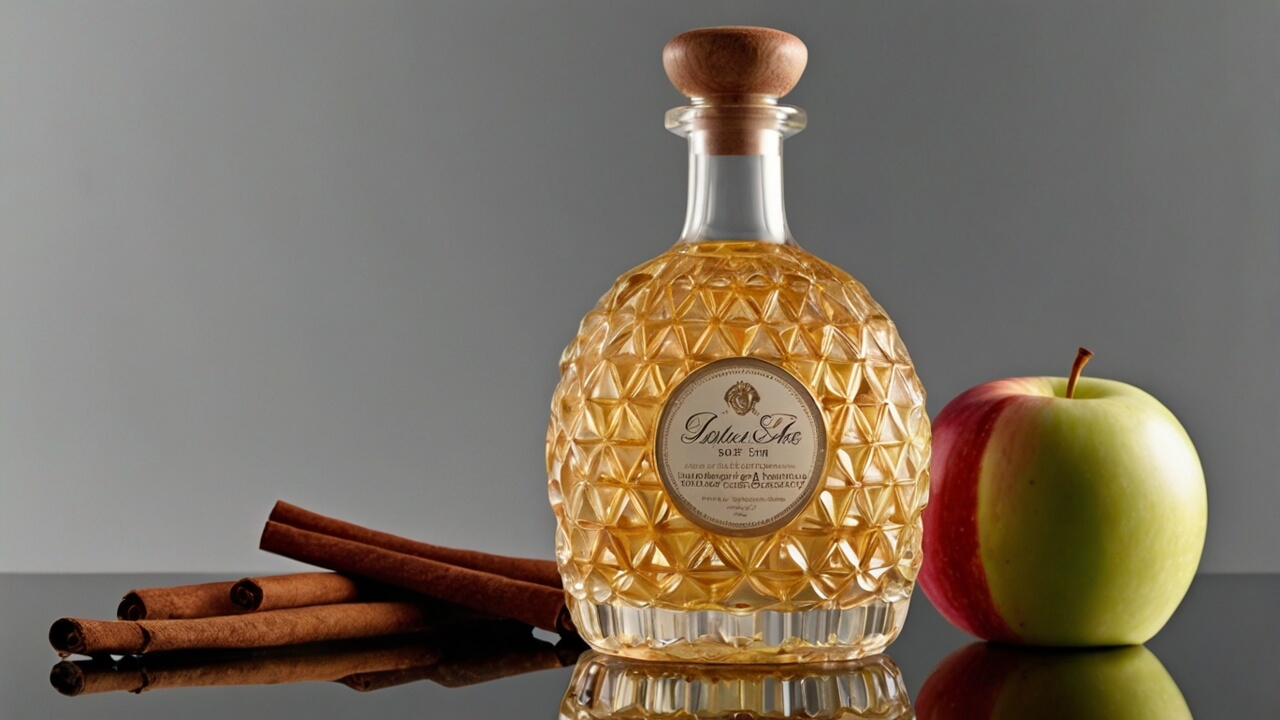
After the primary fermentation is complete, typically within 7-14 days, it’s time to transfer the wine to a secondary fermentation vessel.
This process, known as racking, helps to separate the wine from the spent yeast and sediment, resulting in a clearer, more refined final product.
To rack the wine, sanitize a glass carboy or demijohn, along with a siphon hose and racking cane. Carefully siphon the wine from the primary fermenter into the secondary vessel, leaving as much of the sediment behind as possible.
Top up the carboy with a similar wine or juice to minimize headspace and prevent oxidation. During secondary fermentation, the real magic of Apple Pie Wine happens.
This is when you’ll infuse the wine with the warm, comforting flavors of apple pie spices. Here are some popular additions:
- Cinnamon Sticks: Add 2-3 cinnamon sticks, broken into pieces, for that iconic apple pie aroma and flavor.
- Allspice Berries: Just a few allspice berries lend a subtle warmth and complexity.
- Cloves: A light hand with whole cloves is recommended, as they can quickly overpower the wine.
- Orange or Lemon Zest: The bright citrus notes complement the apple and spices beautifully.
Gently add your chosen spices and zest to the wine, being careful not to disturb the sediment. Allow the wine to continue fermenting for another 2-4 weeks, tasting periodically to ensure the desired flavor intensity.
Once the wine has reached your preferred taste, it’s time to stabilize and sweeten before bottling.
Stabilizing and Back sweetening
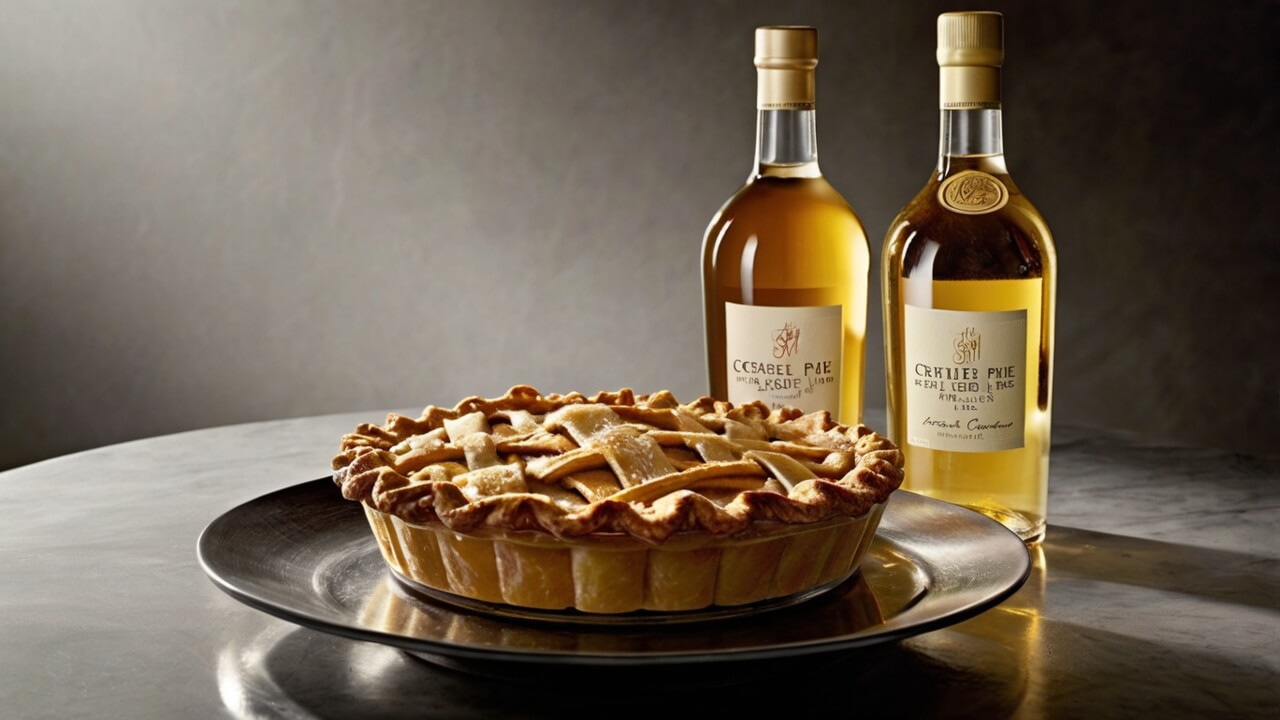
After the secondary fermentation is complete, it’s time to stabilize the wine and adjust the sweetness levels to your preference. Stabilizing the wine ensures that fermentation stops, preventing further dryness or potential bottle bombs.
Stopping Fermentation
To halt fermentation, you’ll need to add potassium sorbate and potassium metabisulfite to the wine. Potassium sorbate inhibits the yeast’s ability to reproduce, effectively stopping fermentation. Potassium metabisulfite acts as an antimicrobial agent, preventing bacterial growth and oxidation.
Follow these steps to stabilize your Apple Pie Wine:
- Dissolve the Stabilizers: In a small amount of water, dissolve 1/2 teaspoon of potassium sorbate and 1/4 teaspoon of potassium metabisulfite for every gallon of wine.
- Add to the Wine: Gently stir the dissolved stabilizers into the wine, ensuring even distribution.
- Wait for Stabilization: Allow the wine to sit for 24-48 hours to ensure complete stabilization.
Adjusting Sweetness Levels
After stabilizing the wine, you can adjust the sweetness levels to your desired preference. This process is called backsweetening, and it involves adding a sweetener to the wine.
Here are some options for backsweetening your Apple Pie Wine:
- Sugar Syrup: Dissolve granulated sugar in a small amount of water to create a sugar syrup. Start with 1/4 cup of sugar per gallon of wine and adjust as needed.
- Honey: Use a light, mild honey to sweeten the wine gradually, starting with 1/4 cup per gallon.
- Apple Juice Concentrate: For an authentic apple flavor, add apple juice concentrate to the wine. Start with 1/2 cup per gallon and adjust to taste.
To backsweeten, follow these steps:
- Add the Sweetener: Gradually add the sweetener of your choice to the stabilized wine, stirring gently to incorporate it.
- Taste and Adjust: Sample the wine and adjust the sweetness level by adding more sweetener as desired.
- Allow to Settle: Once the desired sweetness is achieved, allow the wine to settle for a few days before bottling.
Remember, backsweetening is a matter of personal preference. Start with small additions and taste frequently until you reach your desired level of sweetness.
Enjoy your homemade Apple Pie Wine, perfectly balanced between the warmth of spices and the sweetness of apple pie!
Bottling and Aging
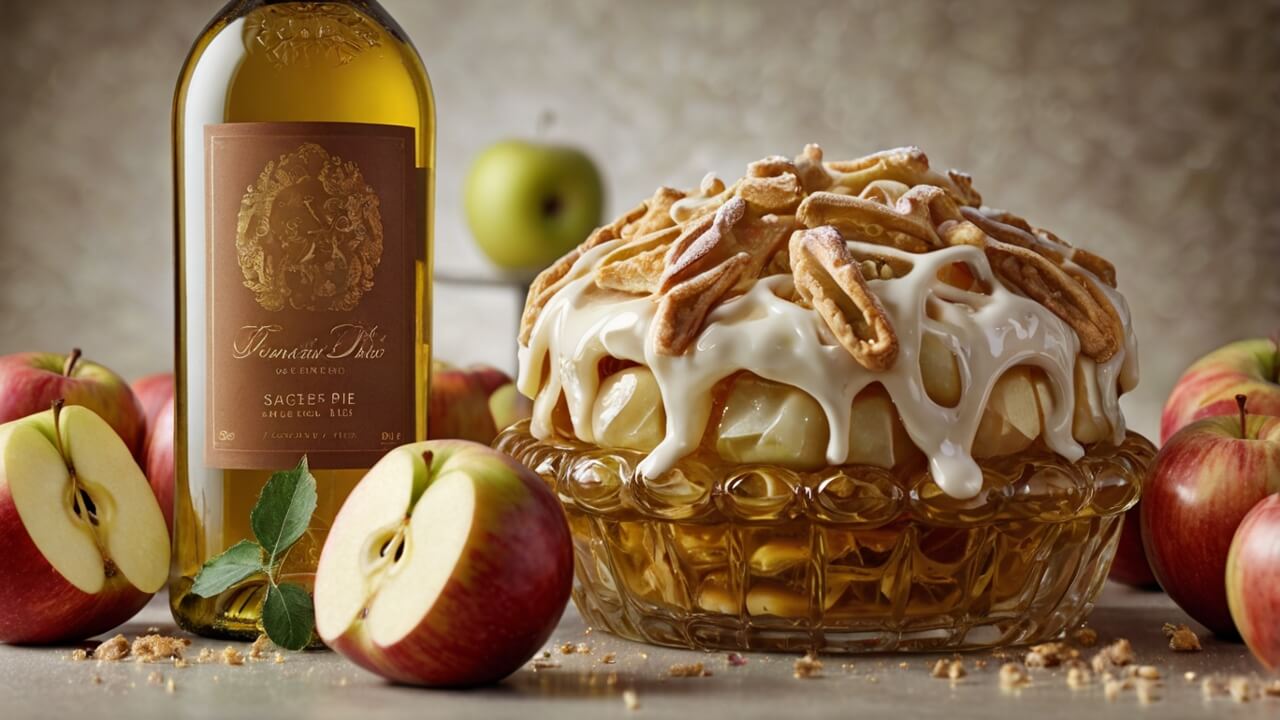
After stabilizing and backsweetening your Apple Pie Wine, it’s time to bottle and age the final product. Proper bottling techniques are crucial to ensure your wine remains fresh and carbonation-free during the aging process.
Bottling Techniques
- Sanitize: Thoroughly sanitize your bottles, siphon tubing, and any equipment that will come into contact with the wine. This step is essential to prevent contamination and ensure a longer shelf life.
- Siphon: Using a sanitized siphon tube, carefully transfer the wine from the carboy into clean, sanitized bottles. Leave about an inch of headspace at the top of each bottle to accommodate expansion during aging.
- Cork or Cap: If using traditional wine bottles, cork them using a corker or wine bottle capper. For other bottle types, secure them with appropriate caps or lids, ensuring a tight seal.
- Label: Clearly label your bottles with the wine type, batch number, and bottling date. This information will help you track the aging process and identify the bottles when ready to consume.
Aging and Storage
Aging is a crucial step that allows the flavors of your Apple Pie Wine to mellow and integrate, resulting in a smoother, more complex taste. Here are some recommendations for aging and storage:
- Temperature: Store your bottled wine in a cool, dark place with a consistent temperature between 55°F and 65°F (13°C to 18°C). Fluctuations in temperature can affect the aging process and potentially spoil the wine.
- Humidity: Maintain a relative humidity level of around 70% to prevent corks from drying out, which can lead to oxidation and spoilage.
- Position: Store bottles horizontally or at a slight angle to keep the corks moist and prevent air from entering the bottles.
- Aging Time: Apple Pie Wine typically benefits from aging for at least 6 to 12 months, but some vintages may improve even further with extended aging of up to 2 years or more. Taste your wine periodically to determine when it has reached its peak flavor.
- Sediment: Over time, sediment may form in the bottles. This is a natural process and does not affect the quality of the wine. When ready to serve, carefully decant the wine, leaving the sediment behind.
By following proper bottling techniques and providing the right aging conditions, your homemade Apple Pie Wine will continue to develop and mature, rewarding you with a delightful, well-rounded flavor that captures the essence of autumn in every sip.
Tips for Success
Achieving the desired clarity and sweetness in your homemade Apple Pie Wine is crucial for a delightful drinking experience. Here are some tips to keep in mind:
Clarity:
- Racking: Carefully rack (siphon) the wine off the sediment during fermentation and before bottling to ensure a clear final product.
- Fining Agents: Consider using fining agents like bentonite or isinglass to help compact and drop any remaining haze-causing particles.
- Cold Crashing: Chilling the wine before bottling can help precipitate out any remaining solids, resulting in a brilliantly clear wine.
Sweetness:
- Backsweetening: Once fermentation is complete, you can backsweeten the wine to your desired level by adding a simple syrup or apple juice concentrate.
- Sweetness Levels: Start with small additions and taste frequently to achieve your preferred sweetness, whether semi-sweet or dessert-sweet.
- Stabilization: Ensure you stabilize the wine by adding potassium sorbate and potassium metabisulfite before backsweetening to prevent renewed fermentation.
For optimal flavor development, consider these suggestions:
- Oak Aging: Age the wine on oak cubes or staves for a few months to impart subtle oak and vanilla notes that complement the apple pie flavors.
- Spice Additions: Experiment with adding whole spices like cinnamon sticks, nutmeg, or cloves during secondary fermentation for a more pronounced spice profile.
- Bottle Aging: Allow the wine to age in bottles for at least 6 months to a year for the flavors to meld and smooth out.
- Temperature Control: Maintain consistent cool temperatures during fermentation and aging for optimal flavor development.
By following these tips, you’ll be able to craft an Apple Pie Wine with a beautiful clarity, balanced sweetness, and a depth of flavor that will leave you and your guests thoroughly impressed.
Troubleshooting Common Issues
During the fermentation process, there are a few potential issues that homebrewers may encounter. Here are some common problems and their solutions:
Stuck Fermentation
If the fermentation process slows down or stops prematurely, it could be due to various reasons, such as:
- Low Nutrient Levels: Yeast requires sufficient nutrients to thrive. Consider adding yeast nutrient or a small amount of raisins to provide additional nutrients.
- Low Temperature: Fermentation may stall if the temperature drops too low. Maintain a consistent temperature between 65°F and 75°F (18°C and 24°C).
- High Alcohol Content: As the alcohol level increases, it can become toxic for the yeast. Try aerating the must or adding a yeast starter to revive the fermentation.
Off-Flavors
If you notice unpleasant aromas or flavors in your Apple Pie Wine, it could be caused by:
- Oxidation: Exposure to air can lead to oxidized flavors. Ensure your equipment is properly sanitized, and minimize air exposure during fermentation and bottling.
- Bacterial Contamination: Wild bacteria or brett can produce off-flavors. Maintain proper sanitization and monitor fermentation temperatures.
- Stressed Yeast: Factors like high alcohol levels, nutrient deficiencies, or temperature fluctuations can stress the yeast, leading to off-flavors. Address the underlying issue and consider repitching fresh yeast.
Cloudy or Hazy Wine
If your Apple Pie Wine appears cloudy or hazy after fermentation, it could be due to:
- Incomplete Clearing: Allow sufficient time for the wine to clear naturally. You can also use fining agents like bentonite or Sparkolloid to aid in clarification.
- Pectin Haze: Apple juice is high in pectin, which can cause a hazy appearance. Adding pectic enzyme during the primary fermentation can help break down the pectin.
Prevention and Monitoring
To prevent and address potential issues, it’s essential to:
- Sanitize: Thoroughly sanitize all equipment to prevent bacterial contamination.
- Monitor Fermentation: Regularly check the fermentation activity, temperature, and specific gravity readings.
- Take Notes: Keep detailed records of your process, including any deviations or adjustments made, to help troubleshoot future batches.
- Be Patient: Fermentation can take time, and some issues may resolve themselves with proper monitoring and patience.
Remember, homebrewing is an art, and experimentation is part of the journey. Don’t hesitate to seek advice from experienced homebrewers or consult reliable resources when facing challenges.
Variations and Experimentation
While the classic apple pie spice blend of cinnamon, nutmeg, and allspice lends an irresistible warmth to this wine, don’t be afraid to experiment with other flavors to create your own unique twist.
Consider adding a hint of vanilla extract, a touch of honey for extra sweetness, or even a dash of brandy for a richer, more complex taste.
For those who prefer a bolder flavor profile, try incorporating complementary spices like cloves, ginger, or cardamom. You could also substitute a portion of the apple juice with other fruit juices, such as cranberry or cherry, to create a delightful blended flavor.
Another exciting variation is to age the wine with oak chips or spirals, imparting a subtle oakiness reminiscent of barrel-aged wines. Alternatively, you could experiment with different types of yeast strains, each contributing its own unique flavor nuances.
The beauty of homebrewing lies in the ability to personalize and tailor the recipe to your preferences. Don’t be afraid to let your creativity shine and craft a truly one-of-a-kind Apple Pie Wine that reflects your personal taste.
Embrace the experimentation process, take notes on your variations, and share your successes with fellow homebrewers to inspire and be inspired.
Conclusion
Crafting your own batch of Apple Pie Wine is a delightful and rewarding experience that combines the cozy flavors of a beloved dessert with the art of homebrewing.
This unique beverage captures the essence of fall, offering a warm and inviting aroma that tantalizes the senses.
Beyond the sheer enjoyment of sipping on this homemade delight, the process of creating Apple Pie Wine itself is a gratifying journey.
From carefully selecting the ingredients to witnessing the transformation of apple juice into a rich, spiced elixir, each step allows you to connect with the age-old tradition of winemaking.
The beauty of this recipe lies in its versatility, encouraging you to experiment and tailor the flavors to your personal preferences.
Whether you prefer a drier or sweeter profile, or wish to explore different spice combinations, the possibilities are endless. Embrace the creative freedom and let your taste buds guide you on a delectable adventure.
Sharing your homemade Apple Pie Wine with friends and loved ones is an opportunity to create cherished memories and foster a sense of community.
Invite others to partake in the experience, exchange stories, and revel in the joy of crafting something truly special together. So, raise a glass to your accomplishment and savor the fruits of your labor.
This unique and flavorful wine is a testament to your dedication and passion for creating something extraordinary from simple, wholesome ingredients. Cheers to the art of homebrewing and the delightful journey that is Apple Pie Wine!

